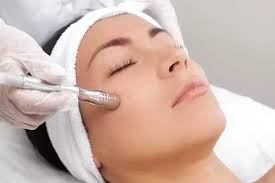
Microneedling treatment, also known as collagen induction therapy, offers several benefits for improving the appearance and health of the skin. However, like any cosmetic procedure, it also comes with its own set of potential drawbacks. Let's explore the pros and cons of microneedling:
Pros:
-
Stimulates Collagen Production: Microneedling triggers the body's natural healing process, stimulating the production of collagen and elastin. These proteins are essential for maintaining skin elasticity, reducing the appearance of wrinkles, and promoting a more youthful complexion.
-
Reduced Wrinkles and Fine Lines: The increased collagen production can lead to a noticeable reduction in fine lines and wrinkles, helping to smooth out the skin's texture and provide a more youthful appearance.
-
Scar Improvement: Microneedling has shown promising results in improving the appearance of acne scars, surgical scars, and other types of scars by promoting skin regeneration and remodeling.
-
Minimally Invasive: Microneedling is a minimally invasive procedure, meaning it doesn't require surgery or extensive downtime. It is generally well-tolerated and has a lower risk of complications compared to more invasive treatments.
-
Suitable for Various Skin Types: Microneedling is considered safe for most skin types and tones, making it a versatile option for a wide range of individuals seeking skin improvement.
-
Enhanced Skincare Product Absorption: The micro-channels created during microneedling allow skincare products to penetrate deeper into the skin, enhancing their effectiveness and leading to better results.
Cons:
-
Redness and Sensitivity: After the procedure, the treated skin may be red and sensitive for a few days. While this is usually temporary, some individuals may experience prolonged redness or irritation.
-
Risk of Infection: If the microneedling device or the treated area is not properly sterilized, there is a risk of infection. It is essential to have the procedure performed by a trained and experienced professional to minimize this risk.
-
Skin Irritation: In some cases, microneedling may cause mild irritation, itching, or peeling during the recovery period. This can usually be managed with proper aftercare and skincare recommendations.
-
Multiple Sessions Needed: Significant improvements often require multiple microneedling sessions, spaced several weeks apart. This can make the overall treatment process time-consuming and may require additional financial investment.
-
Not Suitable for Active Skin Conditions: Microneedling may not be suitable for individuals with active skin infections, cold sores, or certain skin conditions. A consultation with a skincare professional is crucial to determine if the treatment is appropriate for specific skin concerns.
-
Post-Treatment Care Requirements: Proper aftercare is essential for optimal healing and to avoid potential complications. This may include avoiding sun exposure, using gentle skincare products, and adhering to the skincare professional's guidelines.
Conclusion:
Microneedling treatment offers significant benefits for those seeking to improve skin texture, reduce wrinkles, and address scarring. However, like any cosmetic procedure, it's essential to weigh the pros and cons and make an informed decision. Seeking the expertise of a qualified dermatologist or licensed skincare professional is vital to ensure the procedure's safety and effectiveness and to tailor the treatment to individual needs and skin concerns. With proper care and guidance, microneedling can be an effective and rewarding option for achieving healthier and more youthful-looking skin.

No comments yet